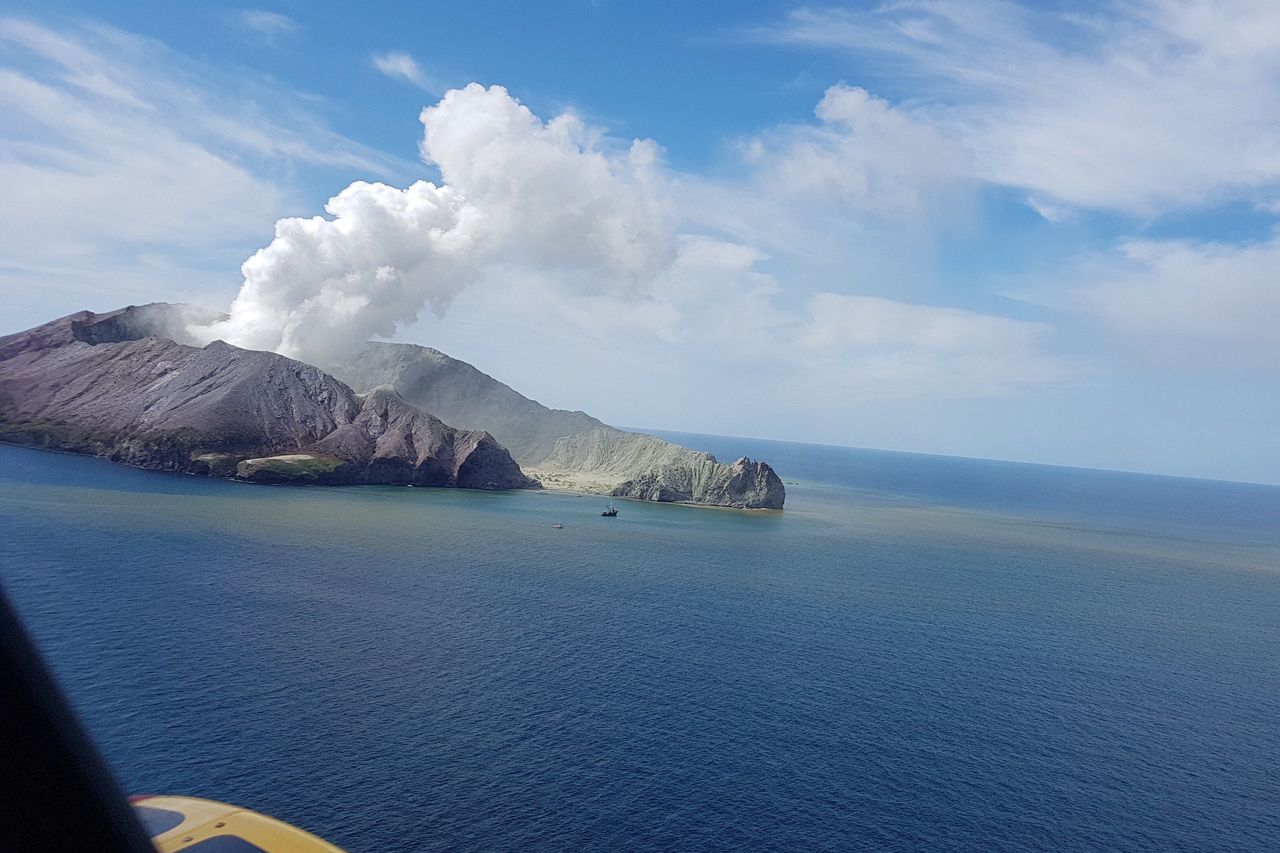Signs of a volcanic eruption and what precautions to take if you're caught in one
Sign up now: Get ST's newsletters delivered to your inbox

At least five people were killed, about 30 injured and several were reported missing after the White Island volcano suddenly erupted off the east coast of New Zealand's North Island on Dec 9, 2019.
PHOTO: AFP
Follow topic:
WELLINGTON - At least five people were killed, about 30 injured and several were reported missing after the White Island volcano suddenly erupted off the east coast of New Zealand's North Island on Monday (Dec 9), spewing a plume of ash thousands of feet into the air.
Here are the facts about volcanic eruptions and what you should do if caught in one.
WHAT ARE THE SIGNS OF A VOLCANIC ERUPTION
According to the US Geological Survey (USGS), most volcanoes provide warnings before an eruption. Notable precursors might include:
* An increase in the frequency and intensity of earthquakes
* Noticeable steaming or fumarolic activity and new or enlarged areas of hot ground
* Subtle swelling of the ground surface
* Small changes in heat flow
* Changes in the composition or relative abundances of fumarolic gases
However, USGS cautioned that the precursors do not indicate the type or scale of an expected eruption as precursors can continue for weeks, months, or even years before eruptive activity begins, or they can subside at any time and not be followed by an eruption.
THE SCIENCE BEHIND THE MONITORING
Monitoring a volcano requires scientists to use of a variety of techniques that can "hear" and "see" activity inside a volcano, said the USGS.
This includes several types of observations such as earthquakes, ground movement, volcanic gas, rock chemistry, water chemistry, remote satellite analysis on a continuous or near-real-time basis.
Scientists collect data from a wide variety of instrument networks then analyse them to look for out-of-the-ordinary signals.
By comparing the data analysis with similar results from past volcanic events, volcanologists are able to forecast changes in volcanic activity and determine whether and when a volcano might erupt.
WHAT TOURISTS SHOULD BE AWARE OF
Although volcano tourism is on the rise, there are still precautions tourists need to take to ensure safety.
Chief among them is to do thorough research.
"Find out as much as possible about the volcano you plan to visit before leaving home," Ms Rosaly Lopes, author of The Volcano Adventure Guide, told The Washington Post.
This includes looking at maps that show roads or trails to the summit. Find out if escape routes have been mapped out and whether search and rescue services are easily available in the event of an emergency.
Pack protective attire: Determine equipment and clothing based on what type of material your volcano is likely to expel and your potential proximity to explosions, Ms Lopes said.
For example, a hard hat or helmet and protective goggles are advisable when visiting an active volcano.
WHAT TO DO IF A VOLCANO ERUPTS
If you are indoors when a volcano erupts, find out the latest emergency information and instructions from radio or television channels or websites.
Local officials will be able to give the most appropriate advice and as such, follow any evacuation orders issued by authorities.
If you are outdoors, seek immediate shelter and stay out of designated restricted zones.
The Red Cross organisation advices against seeking shelter at low-lying areas, areas downwind of the volcano and river valleys downstream from the volcano as debris and ash will be carried by wind and gravity.
Those in the vicinity are urged to wear long sleeved shirts and long pants to protect the skin from falling ash, wear goggles to protect the eyes and a dust mask to protect against lung irritation.
In the absence of a dust mask, tie a wet cloth over the nose and mouth.
Sources: redcross.org, Washington Post, USGS

